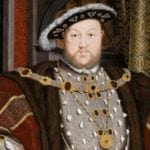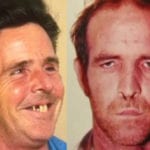 Humans
Humans  Humans
Humans  Animals
Animals 10 Species That Refused to Go Extinct
 Weird Stuff
Weird Stuff 10 Weird Things People Used to Do at New Year’s
 Our World
Our World 10 Archaeological Discoveries of 2025 That Refined History
 Weird Stuff
Weird Stuff 10 Fascinating Facts You Might Not Know About Snow
 Miscellaneous
Miscellaneous Top 10 Things Crypto Was Supposed to Change & What Actually Did
 History
History 10 Huge Historical Events That Happened on Christmas Eve
 Music
Music 10 Surprising Origin Stories of Your Favorite Holiday Songs
 History
History 10 Less Than Jolly Events That Occurred on December 25
 Weird Stuff
Weird Stuff 10 Funny Ways That Researchers Overthink Christmas
 Humans
Humans 10 Unsung Figures Behind Some of History’s Most Famous Journeys
 Animals
Animals 10 Species That Refused to Go Extinct
 Weird Stuff
Weird Stuff 10 Weird Things People Used to Do at New Year’s
Who's Behind Listverse?

Jamie Frater
Head Editor
Jamie founded Listverse due to an insatiable desire to share fascinating, obscure, and bizarre facts. He has been a guest speaker on numerous national radio and television stations and is a five time published author.
More About Us Our World
Our World 10 Archaeological Discoveries of 2025 That Refined History
 Weird Stuff
Weird Stuff 10 Fascinating Facts You Might Not Know About Snow
 Miscellaneous
Miscellaneous Top 10 Things Crypto Was Supposed to Change & What Actually Did
 History
History 10 Huge Historical Events That Happened on Christmas Eve
 Music
Music 10 Surprising Origin Stories of Your Favorite Holiday Songs
 History
History 10 Less Than Jolly Events That Occurred on December 25
 Weird Stuff
Weird Stuff 10 Funny Ways That Researchers Overthink Christmas
Top 10 Misconceptions About Henry VIII And His Court
The reign of Henry VIII is one of the most romanticized periods in history. Full of religious upheaval, murder, mayhem and larger-than-life figures, there are plenty of myths and misconceptions that have taken the place of real history when it comes to Henry, his many wives, the Royal Court, and his world-changing laws.
10Henry Likely Never Had Syphilis
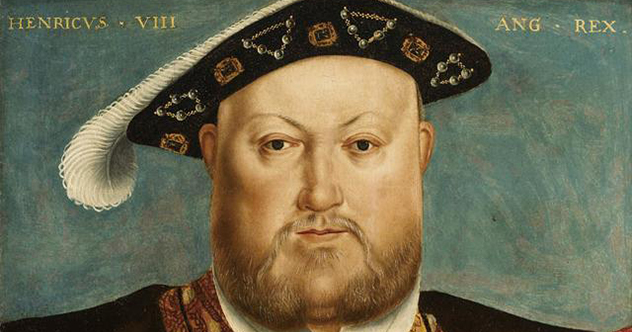
Change the religion of your entire country so you can divorce your wife and upgrade to a more fertile model and you are bound to have all sorts of rumors start circulating about what goes on in the royal bedroom—and what kinds of consequences you might be subject to. One of the long-standing rumors about Henry VIII is that he was suffering from syphilis, but there is not much that suggests that was actually the case.
When it comes to Henry’s health, we have quite a bit of information. Absolutely none of it is from his personal physicians, who likely did not keep records of the king’s health for their own peace of mind (and safety). However, historians do have state documents, dispatches, and documents written by visitors to the court that detail some of the illnesses that plagued the king. In 1514, Henry suffered from what was either smallpox or measles, and he came down with malaria in 1521. His love of sport and hunting meant that there were quite a few injuries, but until he started gaining the weight he was later famous for, he was fairly healthy.
What we do not have is any record of Henry exhibiting any of the signs of syphilis—which was well recognized at the time, and treated with a 6-week course of mercury. The ulcers on his legs are often cited as evidence, but medical professionals generally agree that the ulcers were more likely from stasis and varicose veins. These types of ulcers are more commonly associated with deep vein thrombosis, and when the clot breaks free, it causes symptoms like those Henry suffered from in 1538.
None of his wives or mistresses ever showed signs of being exposed to syphilis, and even Catherine of Aragon’s difficulty in carrying a child to term (often evidence cited in support of the syphilis theory) does not fit the actual, medical profile of pregnancies affected by syphilis. None of his surviving children showed any signs of congenital syphilis, either, and it was likely a rumor spread to help discredit the monarch even further.
9Medical Treatment and Disease Prevention was Not Entirely Horrible
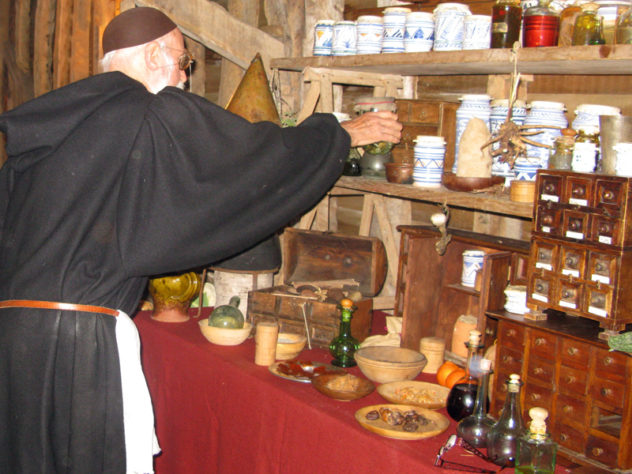
Tudor-era medicine definitely is not on par with what we have today, but Henry oversaw some major advancements in the field.
He was the monarch that founded the Royal College of Physicians, and combined several organizations into the Company of Barber-Surgeons. Those groups—along with other medical practitioners—were regulated by legislation that Henry pushed through Parliament to make sure those that were dispatching medical advice and treatment were properly trained and licensed. The laws stood as they were for the next three centuries.
Even though they still had not figured out the dangers of things like lead, Henry did make massive sanitation advancements in other areas. He oversaw the installation of public sewers, the sourcing of public water supplies, and during times of plague, he ordered the segregation of citizens that had become ill and started an early form of disinfection.
When it came to the health of his son, the delicate and sickly young Prince Edward, Henry took a number of precautions that would seem perfectly rational today. The prince’s chambers were strictly off-limits to anyone who showed signs of illness. Any member of the household staff who went into London proper or mingled with the crowds of commoners was required to go through a period of quarantine before they were allowed to rejoin the daily activities of the court. The prince’s chambers were cleaned on a strict schedule to try to prevent illness, but Edward still fell ill with what is assumed to be tuberculosis in spite of all the precautions that were taken.
8They Had Excellent Teeth
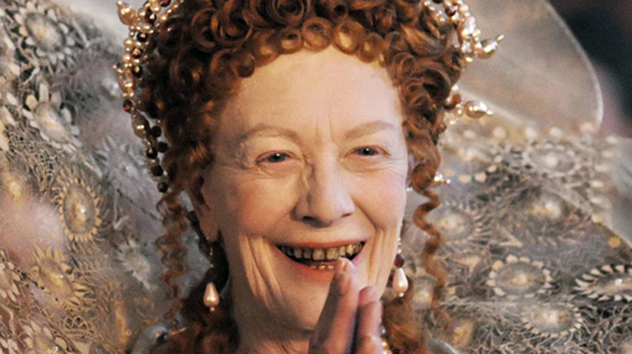
One of the most stereotypical images of the British court—and of England in general—is the one about the bad teeth. Elizabeth I certainly fit the bill, infamous for her blackened teeth and terrible breath. As she aged, she suffered from so many problems with her gums and teeth that some people recorded their difficulties in understanding what she was saying.
In large part, that was because of the recent introduction of sugar into the English diet. During Henry’s rule, sugar had yet to arrive on the scene and that made a huge difference when it came to dental hygiene. With no access to sugar, Henry and the members of his court were, for the most part, sporting teeth that were surprisingly white. The decline of dentistry was a fast one, though, and the industry could not keep up with the amount of damage sugar did to the English smile. By Elizabeth’s time, she was faced with having some of her rotting teeth pulled. It was a prospect that scared her so much that one of her bishops volunteered to have a tooth pulled first, to show her that it was not entirely unbearable.
7They Had Decent Hygiene, Too

With the members of the court always clad in the same heavy, restrictive clothing of the era and without access to dry cleaners, washing machines, or showers, it is easy to imagine the court—and the courtiers—stinking to high heaven.
Evidence suggests otherwise.
The Tudor court was well aware of the connection between filth and disease, and (while this was by no means a luxury enjoyed by the common person) Henry’s personal facilities were even equipped with a sort of indoor plumbing that made frequent bathing possible. Henry—and his court—would travel from house to house on a schedule that was limited by the amount of water that could be supplied to each location, and many of the royal residences were overhauled and updated during his reign. That included an update to the king’s personal chambers, and his bathrooms at Hampton Court, the Tower of London, Windsor and New Hall were all equipped with massive bathtubs fed by hot and cold taps. The taps were fed by nearby springs, and some were connected to cisterns and run through small rooms used solely for heating the king’s bath water.
While we do not know how often he bathed, we do know that literature of the time recommended infusing bath water with things like rosemary, sage, and orange peel. The ladies of the court often used scented soaps made with olive oil, and perfumes were common. While washing clothes still proved a monumental task, most people (royal and otherwise) were now wearing linen undergarments that were washed more regularly than their outerwear. Keeping undergarments clean was of the utmost importance, and it was a sign of good standing and character.
6Henry VIII Didn’t Have 6 Wives

History buffs all know the story. Henry was married to Catherine of Aragon for almost 24 years before he changed the world to divorce her. She was followed by Anne Boleyn, Jane Seymour, Anne of Cleves, Catherine Howard, and Kateryn Parr…. but Henry didn’t have six wives.
Technically, he only had three.
Three of his marriages were annulled before the women met their inevitable fates, so in the eyes of God, the law, and most importantly Henry himself, they never happened. His 23-year marriage to Catherine of Aragon was annulled, his 6-month union to Anne of Cleves was annulled and, before she was sent to the chopping block, Henry annulled his marriage to Anne Boleyn.
5Thomas Cromwell Was Far From a Stick-in-the-Mud

Thomas Cromwell is one of the most infamous members of Henry’s court. The son of a man who worked off and on as a tavern-keeper, a blacksmith and a brewer (and whose name shows up in criminal records at least 48 times), Cromwell ran away from home at 15, traveled across Europe, fought in wars, established his own trading business, sweet-talked his way into an audience with the Pope, and eventually ended up working for Cardinal Wolsey. He continued to work his way up from there, and was ultimately the mastermind behind Henry’s first legendary, history-making divorce. History has painted him as cunning and ruthless, and while he certainly was, he was also much more.
He was a complete party animal.
It was only in 2014 that historians started looking at some of his personal documents and the accounts of his spending, and found that he spent thousands of pounds—an astronomical sum—on parties. He was a connoisseur of fine wines and fine foods, but he made sure to share with the rest of the court, too. His parties were filled with jesters, entire menageries of exotic animals, endless food and drink (from swan and oysters to artichokes, cherries, gooseberries and pastries), and he even spent somewhere around £1,000 on a silly costume for himself, in an effort to make Henry laugh.
He was also a relentless gambler, losing somewhere around £50,000 (adjusted for today’s inflation) in a span of two years.
4The Court Fools Weren’t Trying for a Laugh
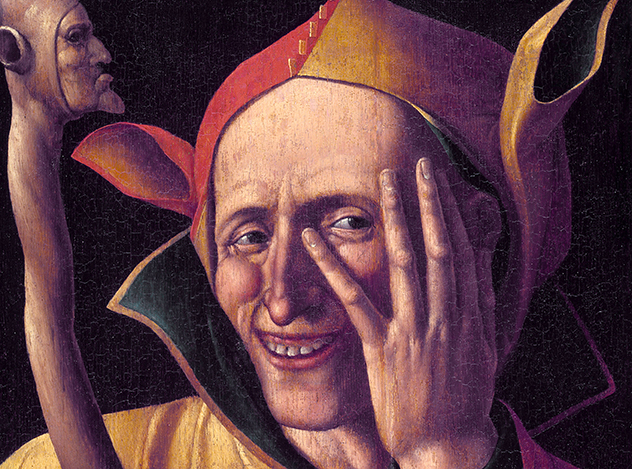
The court jester is one of the most enduring images of a pre-modern royal court. We have an idea that they were people who made a living—and kept their heads—by making sure the court was always entertained, and they did it by mimicking a foolish nature and spewing low-brow humor.
According to the University of East Anglia’s Suzannah Lipscomb, the truth might be very different.
She says that it is more likely that the jesters and fools that Henry and his family kept at court were what they called “natural fools”: people that we would today describe as having a learning disability. In 1540, a legal decree gave royal authority over people who were described as “idiots and fools natural”, and contemporary documents seem to suggest that group included those Henry employed as jesters. Most famous was Will Somer, who entered court in 1535 and remained there into the reign of Elizabeth I. Called a “sot” and “the king’s natural jester”, documents show that another man, William Seyton, was paid a sum of 40 shillings “to keep William Somer”.
At the same time Somer and his companions were the target of ridicule, they were also thought to be closer to God than most men. Incapable of sin, they were touched by the divine and there was a belief that within the folly that they spoke was a deep sort of wisdom.
3Everything Ever Said About Anne of Cleves

Henry’s marriage to Anne of Cleves was his shortest, lasting only six months. Mainstream history has painted her as so ugly that Henry was unable to consummate the marriage, saying she was also lacking in fashion sense and intelligence, and that she smelled absolutely horrible.
It is entirely likely that her short marriage and cultural differences has painted her in an unflattering light that she absolutely does not deserve.
Henry had sent several ambassadors to the German court to ascertain whether or not Anne would be an appropriate match. When they came back, it was with news that Anne had met their approval—which would be an incredibly odd thing, were she as hideous and stupid as she has always been reported to be, especially given Henry’s reputation for sending people that crossed him to their death. Henry took an immediate dislike to her, but he never gave her the most disparaging of her nicknames: the Flanders Mare. That name only showed up in the late 17th century, and it came from a book written by the Bishop of Salisbury.
There is no actual historical evidence for a lot of the claims made about Anne. The most well-known of the stories about her involves her being so ugly that Henry was unable to consummate the marriage, but one theory suggests that her appearance was simply an excuse to cover the king’s impotence. Not long after their marriage, a tournament was staged in Greenwich to acknowledge what should have been a happy event. While accounts penned by witnesses told of a new queen who was dressed in a way that accented her beauty, the cultural divide between the expectations of the English court and her German upbringing made her seem like an unrefined outsider. Instead of dancing and music, she had learned more practical skills that made her seem more of an English commoner than royalty.
Henry ultimately used her previous betrothal as an excuse for why the marriage needed to be annulled, and Anne remained in such good standing with Henry and the court that it was rumored she would remarry him after Catherine Howard was sent to the block.
2Anne Boleyn’s Sixth Finger
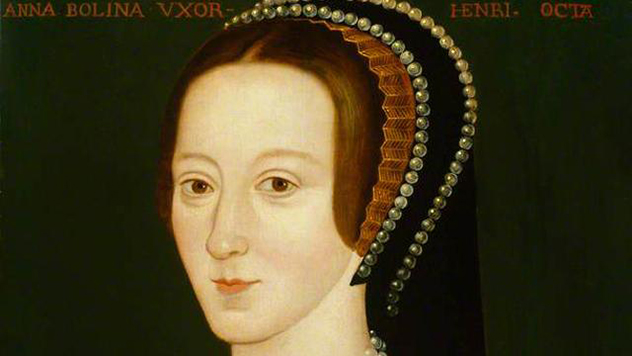
When it comes to myths that have firmly entrenched themselves in our collective consciousness, this has to be one of the most enduring. Even those that admit they do not know much about Tudor history know that Henry’s most famous wife had six fingers on one hand.
Even though some have speculated that the story of Anne’s sixth finger grew out of an abnormal fingernail, we know that she definitely did not have six fingers. The first mention of her sixth finger came from the writing of Nicholas Sander, a Catholic who penned a huge amount of propaganda for his cause. In his book “The Rise and Growth of the Anglican Schism”, Sander paints Anne as the vessel that led to one of the greatest affronts the Catholic Church had ever seen. Sander describes Anne as having weirdly protruding teeth, a massive wen on her neck, a sallow complexion and, of course, the sixth finger. Anne became the embodiment of physical abnormalities that were connected with an impure soul and people who were in league with the Devil.
If Anne truly had sported any of those features, she would have never been allowed to be a lady-in-waiting to the queen, much less an actual queen. None of her contemporaries—including those who despised her, and would have loved the chance to gossip about the meaning of a sixth finger—ever reported such a thing. And when the remains buried at St. Peter ad Vincula were exhumed and examined (presumably with Anne’s skeleton among them), none had six fingers.
But the myth has stubbornly remained for centuries, in part because of the fact that we actually have no idea what she really looked like. Henry went out of his way to destroy all portraits of her before she was executed. Those that remain are, for the most part, copies, and none can be concretely described as presenting an accurate picture of her.
1There Was No Idea of a “Tudor” Monarchy

The idea of the Tudor era seems pretty clear-cut today, defined as the period of history between Henry VII and Elizabeth I. But Oxford historians have done some digging, and they found that not only was the idea of a Tudor dynasty something that was never referred to, but the very idea was something of an embarrassment.
The Tudor name is Welsh, and it comes to Henry VIII through his father’s side and the Welsh adventurer Owen Tudor. He hailed from Penmynydd, and his Welsh name was Owain ap Maredudd Tudur. According to the legend, he was a squire when he got drunk and quite literally fell into the lap of Catherine of Valois, queen of England. Her husband, Henry V, died in 1422 and she would go on to marry Owen, in secret, in 1429. Their marriage was incredibly unpopular, and it wasn’t until 1431 that Owen was given the same rights that any free Englishman enjoyed.
Catherine died in 1437, leaving behind Owen and some illegitimate children. Owen was pardoned by his step-son, Henry VI, and was welcomed into the royal court under his anglicized name, Owen Tudor.
Even though Owen Tudor’s offspring rose to power at the end of the Wars of the Roses, historians have found no real evidence that suggests they identified themselves as a “Tudor” monarchy. Sifting through countless documents from the period have yielded no references to a dynasty by that name, and there is only a single poem that actually acknowledges the shift in power from the Tudors to the Stuarts.
Oxford scholar Dr. Cliff Davies went a step further, and suggested that the idea of a Welsh Tudor heritage had been deliberately suppressed by Henry VIII, who considered his Welsh roots nothing less than an embarrassment. Henry’s references to his heritage paint him as a blending of the Lancaster and York families rather than as a Tudor, and it is only in the 18th century that the idea of a Tudor dynasty was integrated into history with the work of philosopher David Hume.
